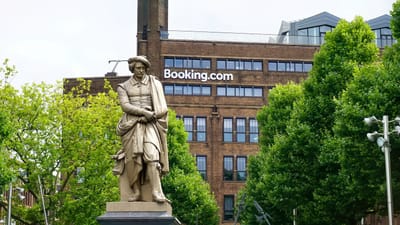Creating Effective Landing Pages for Specific Booking Offers
Creating effective landing pages for specific booking offers is crucial for maximizing conversions and increasing bookings. This comprehensive guide delves into the art of designing high-converting landing pages tailored to special deals or services. We'll explore essential strategies for structuring content, incorporating persuasive elements, and optimizing for various traffic sources. By implementing these techniques, you'll be able to craft landing pages that resonate with your target audience, effectively communicate your offer's value, and ultimately drive more bookings. Whether you're in the hospitality industry, travel sector, or any service-based business, this article will provide you with valuable insights to enhance your landing page performance and boost your conversion rates.Table of Contents:

Understanding the Importance of Targeted Landing Pages
Targeted landing pages play a crucial role in converting visitors into customers. Unlike generic website pages, these specialized pages are designed to focus on a specific offer or service, making them more effective at driving conversions. By creating landing pages tailored to particular booking offers, you can address the unique needs and interests of your target audience, resulting in higher engagement and conversion rates.When visitors arrive at a well-crafted landing page, they're presented with relevant information that directly aligns with their search intent or the ad they clicked. This relevance reduces bounce rates and increases the likelihood of visitors taking the desired action, such as making a booking or submitting an inquiry. Moreover, targeted landing pages allow you to track and measure the performance of individual campaigns more accurately, enabling you to optimize your marketing efforts and allocate resources more effectively.
Do you need a website? Want to build a website but don't know where to start? Our website builder is the perfect solution. Easy to use, and with the ability to customize to fit your business needs, you can have a professional website in no time.
Structuring Your Landing Page Content
The structure of your landing page content is critical to its success. Start with a compelling headline that clearly communicates your offer's unique value proposition. Follow this with a subheadline that provides additional context or highlights key benefits. The main body of your landing page should be concise yet informative, focusing on the most important aspects of your offer.Use bullet points or short paragraphs to break down the key features and benefits of your booking offer. This makes the information easily scannable for visitors who may be short on time. Include social proof elements such as customer testimonials, ratings, or trust badges to build credibility and reassure potential customers. Lastly, ensure your call-to-action (CTA) is prominently displayed and clearly communicates the next step you want visitors to take, whether it's 'Book Now,' 'Reserve Your Spot,' or 'Get Started.'
Incorporating Persuasive Elements
To create a high-converting landing page, it's essential to incorporate persuasive elements that motivate visitors to take action. Start by emphasizing the unique selling points (USPs) of your booking offer. What makes it stand out from competitors? Highlight any exclusive features, limited-time promotions, or special perks that come with the booking.Create a sense of urgency by using time-sensitive language or displaying countdown timers for limited-time offers. This encourages visitors to act quickly rather than postponing their decision. Utilize vivid, high-quality images or videos that showcase your offering in the best light, helping visitors visualize the experience they'll have. Additionally, address potential objections or concerns proactively by including an FAQ section or offering a satisfaction guarantee. These elements work together to build trust and reduce hesitation, ultimately leading to higher conversion rates.
Building a website with SITE123 is easy
Optimizing for Different Traffic Sources
To maximize the effectiveness of your landing pages, it's crucial to optimize them for different traffic sources. Each source, whether it's organic search, paid ads, social media, or email marketing, may have a slightly different audience with varying expectations and levels of familiarity with your brand.For organic search traffic, focus on aligning your landing page content with relevant keywords and search intent. Ensure that your page title, meta description, and headers accurately reflect the content and offer. For paid ad traffic, create a seamless experience by matching the landing page messaging with the ad copy and visuals. This consistency helps maintain the visitor's interest and reduces confusion. When optimizing for social media traffic, consider incorporating social sharing buttons and highlighting user-generated content to leverage social proof. For email marketing, personalize the landing page content based on the subscriber segment and the specific offer promoted in the email campaign.
Designing for Mobile Users
With an increasing number of users accessing the internet via mobile devices, it's crucial to design your landing pages with mobile users in mind. Implement a responsive design that automatically adjusts to different screen sizes, ensuring a seamless experience across all devices. Use larger, easy-to-read fonts and prominent buttons that are easily tappable on smaller screens.Optimize your page load speed for mobile users by compressing images, minimizing code, and leveraging browser caching. A fast-loading page is essential for keeping mobile users engaged and reducing bounce rates. Consider implementing AMP (Accelerated Mobile Pages) for even faster loading times on mobile devices. Additionally, structure your content in a way that's easily scannable on mobile, using short paragraphs, bullet points, and clear headings to break up the text and make it more digestible for on-the-go users.
A/B Testing and Continuous Improvement
Creating effective landing pages is an ongoing process that requires continuous testing and refinement. Implement A/B testing to compare different versions of your landing pages and identify which elements perform best. Test various aspects such as headlines, images, CTA buttons, color schemes, and layout to determine the most effective combination for driving conversions.Utilize analytics tools to track key metrics such as bounce rate, time on page, and conversion rate. This data will provide valuable insights into user behavior and help you identify areas for improvement. Pay attention to user feedback and conduct surveys to gather qualitative data on what visitors like or dislike about your landing pages. Regularly update your landing pages based on these insights and industry trends to ensure they remain effective and relevant. Remember that what works today may not work tomorrow, so continuous optimization is key to maintaining high conversion rates over time.





